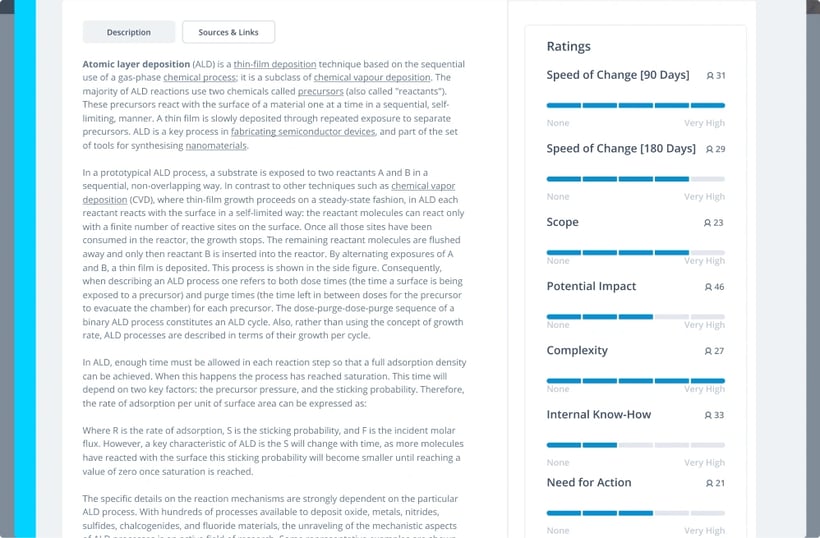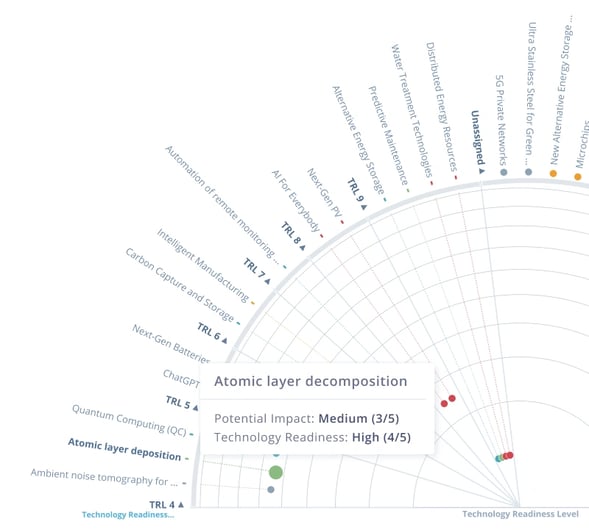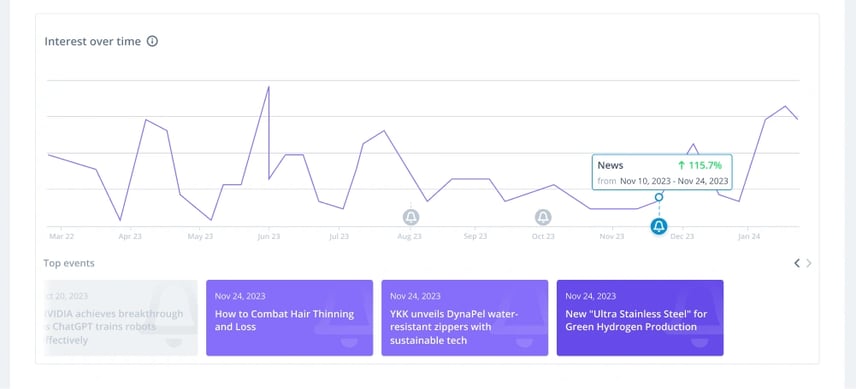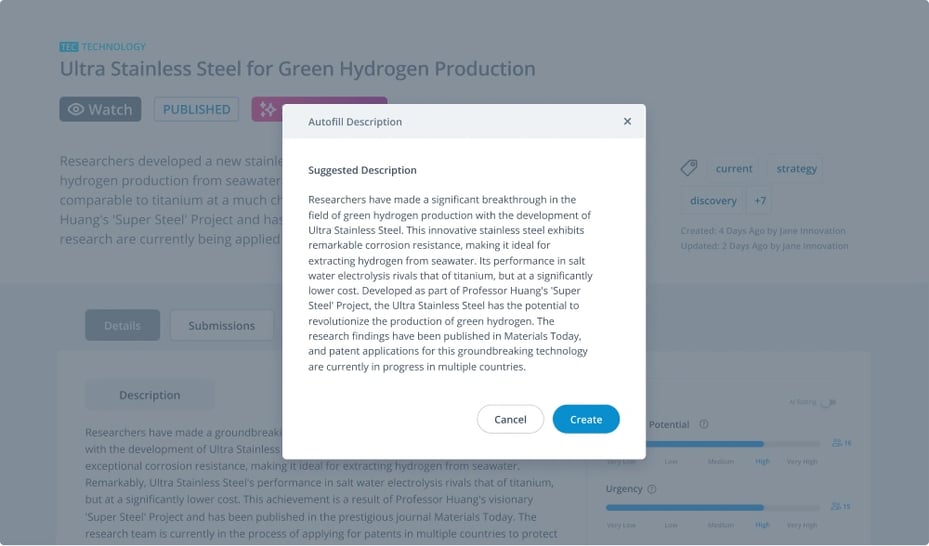For innovation, technology, and R&D decision-makers, the ability to translate data into actionable insights and, ultimately, revenue is paramount. This is where AI insight detection emerges as a game-changer, revolutionizing the approach to decision-making and accelerating time to revenue.
In the past, extracting meaningful insights from vast volumes of data was a time-consuming and labor-intensive process. Traditional methods often involved manual data analysis, which was prone to human error and inefficiency. As a result, the journey from data collection to revenue generation was fraught with obstacles and delays.
However, this paradigm has shifted dramatically with the advent of AI-powered market intelligence technologies. These tools, such as AI research assistants, can now sift through massive datasets in real time, identifying patterns, trends, and anomalies with unparalleled speed and accuracy. This enables C-level managers to make informed decisions swiftly and capitalize on emerging opportunities before competitors. With the aid of market intelligence tools, organizations can stay ahead of the curve and drive innovation more effectively.
1. Uncover meaning from data. Automatically.
The ITONICS Automated Monitoring feature serves as a beacon amidst this rapid evolution, swiftly detecting sudden spikes or declines in interest and promptly notifying users via email alerts. Within the system, users can visually track these fluctuations on a timeline and filter for specific periods, gaining invaluable context through aggregated data clusters sourced from similar-themed news articles. These clusters, supplemented by AI-generated titles and summaries, provide quick insights into significant developments and provide the context to understand why changes happen. For deeper analysis, users can effortlessly access and explore individual news articles within the clusters. The ITONICS Automated monitoring tool is designed to help your teams focus on the most impactful developments. Then, get your internal experts to rate these new developments further so you can turn information into action.
2. Better efficiency, less risk. Accelerated time-to-money.
Automated monitoring is the cornerstone of swift detection and response to market trends, consumer preferences, and competitive movements. This AI research assistant empowers you to efficiently gather, analyze, and act on market insights in real-time, streamlining your innovation processes and enhancing your ability to monitor trends, technologies, and more. With this capability, you can seize emerging opportunities and effectively mitigate risks, ensuring your organization stays ahead in today's dynamic business landscape.
Improving efficiencies in teams
Automated monitoring significantly speeds up the path to profitability by simplifying data gathering and analysis. Rather than manually sifting through vast amounts of information from various sources, teams can rely on automation to filter, aggregate, and prioritize relevant insights swiftly. This efficiency results in faster decision-making and the prompt execution of innovative concepts.
Consider a scenario where your R&D, technology, or innovation teams are researching tools for synthesizing nanomaterials, with a focus on Atomic Layer Deposition (ALD).To stay updated on ALD-related developments, team members can opt to receive email alerts for any significant changes in interest, leveraging the power of AI-powered market intelligence. With just one click, they can access these updates on a timeline and explore aggregated data explaining the shifts, all within the same platform.
Aggregated data clusters enable team members to efficiently process large datasets and identify areas for further exploration or reporting.
Eliminate the risk of overlooking crucial insights
Automated monitoring ensures organizations swiftly seize emerging trends and market opportunities, avoiding the risk of critical data being lost amid noise. The ITONICS Innovation OS offers a neutral lens for teams to view important developments, enhancing objectivity in scanning and monitoring processes by minimizing search and personal biases.
Incorporating external evaluation is vital to neutralize human biases in environmental scanning. In ITONICS, automated evaluations offer scores for focus fields in the system, reflecting the extent of development observed for trends, technologies, etc., over a specific period.
For instance, consider Atomic layer deposition technology, which exhibits a High Speed of Change over 180 days and a Very High Speed of Change over the last 90 days. These objective ratings empower decision-makers with automated insights, ensuring valuable opportunities are not overlooked due to skewed interpretations. Automated evaluations augment human capabilities, enabling teams to notice essential patterns and explore individual signals comprehensively using timeline and Key Events features.
In addition to automated scores, your teams can leverage evaluations by seeking input from internal or external experts to assess each trend, technology, etc., highlighting perspectives they may have overlooked. You can then gain insight into the implications of these ratings by examining, for instance, a technology radar. Customize the views to display the desired information, facilitating swift decision-making.


Navigate change and adapt fast
By harnessing automation and optimizing processes, organizations enhance their ability to swiftly uncover crucial insights, facilitating agile pivoting and strategic alignment to seize emerging opportunities. This proactive approach not only speeds up time-to-market but also enhances success prospects in an ever-evolving marketplace.
Utilize Automated Monitoring to expedite environmental scanning and pinpoint critical priorities. Additionally, leverage the ITONICS Radar to visually represent data, providing deeper context for faster insights and more informed decisions. Employ the Radar as a dissemination tool to raise awareness of strategic focus areas and foster collaboration by inviting collective, cross-functional evaluation to speed up consensus.
For instance, consider our previous example - Atomic Layer Deposition technology. The system alerts your team members of a notable surge in news articles related to this topic. Upon investigation, a team member identifies recent advancements in Atomic Layer Deposition, one of which aligns closely with your organization's interests. They can effortlessly save this development as a separate technology for evaluation and monitoring. Moreover, they can easily report on the development using the AI-generated descriptions provided by our Smart features.
Learn more on how to Advance R&D Strategies with AI-Enhanced Technology Reporting →
Once this new technology receives internal ratings, you can promptly gauge its potential significance by examining it on a Radar or Matrix view.




3. Maximizing potential: Accelerating profitability with automation
By embracing automated monitoring and refining processes, organizations enhance their foresight intelligence, leveraging AI-powered market intelligence to promptly pinpoint critical insights. This proactive approach, facilitated by market intelligence tools, fosters nimble pivoting and strategic alignment to capitalize on emerging opportunities. This not only expedites time-to-market but also bolsters success prospects in monitoring trends, technologies, and more within an ever-evolving marketplace.
Efficiency gains derived from automated monitoring significantly accelerate the journey to profitability by streamlining data collection and analysis. Instead of manually sifting through extensive data from diverse sources, teams can rely on automation to swiftly filter, aggregate, and prioritize pertinent insights. This efficiency translates into expedited decision-making and the swift execution of innovative concepts.
In addition, scalability emerges as another key benefit of automating environmental scanning. With advanced automation tools at their disposal, organizations can monitor any facet of their environment to any desired extent, ensuring a comprehensive grasp of their operational landscape. This scalability empowers organizations to optimize resource allocation, sidestepping the pitfalls of data overload while maximizing the depth and breadth of their insights.










